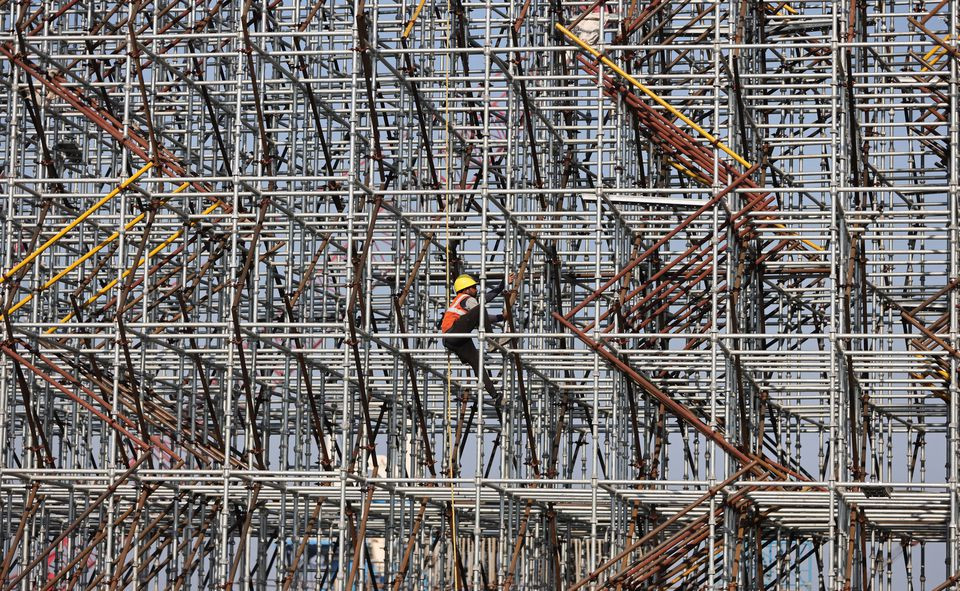
This is the third part of the series on air pollution and smog and how to avoid control or reduce the problem so as to cause lesser damage that it is doing.
In the first part, we took a broad view of the problem. And in the second part, we discussed, probably, the largest part of the problem - transport sector’s role in air pollution. In this part, we will take note of the construction sector’s role.
Construction is perhaps the most important economic and social activity in human life. The construction sector’s contribution to Pakistan’s gross domestic product (GDP) stands around 14-15%.
In advanced countries, the sector contributes 23% to air pollution, 50% to climate change, 40% of drinking water pollution and 50% of landfill waste. However, in these countries the aggregate pollution is much lesser.
Construction sites have been reported to be responsible for 14.5% of PM2.5 and 8% of PM10 emissions in a number of countries. In China, it has been reported that construction dust contributes 27% of the causes of diseases caused by pollution. In Delhi, 38% of PM10 is due to construction and in Chennai, it is 23%.
On Pakistan, reliable data is not available on the construction sector and site activities regarding pollution. However, one can readily see that dust is a very significant contributor to air pollution.
Dust plumes are clearly visible in Pakistan as one sees the industrial smoke. However, it is taken lightly. Vehicular pollution is given much more attention. Pollution from many sources rides on dust particles and spreads to larger areas.
However, construction dust control can be the cheapest and easiest of all. Following guidelines are available in this respect. Sprinkling water on construction site land, especially in areas where loose dust appears to be there; as simple as that. Water availability can be a problem. Partly treated waste water can be used also. Where dust seems to be rising and appears to be suspended, water guns are to be employed to settle the dust.
Site construction plan should be organised and approved keeping pollution causing activities farther from roads and active population centres.
Tillage also controls wind erosion. Mulching the land soil is the most useful method employed in agriculture, which is also quite effective in construction.
Material loading and unloading can be done carefully keeping the unloading device closer to land so as to avoid dust rising.
Under certain conditions, apply polymer and chloride to the top of the soil and then sprinkle water to create a seal over the loose soil. Speed limit should be observed of vehicles moving on unpaved roads on the site. This limits soil erosion. Many people may have seen trucks which raise dust when moving on the site.
Iron sheet enclosure of 25-35 feet height is to be installed on all sides of construction site. Entire under-construction building has to be covered with green tarpaulin or equivalent fabric to stop cement or other material dust coming out. It is a pleasure to see sometimes these instructions being partly implemented. It is a good beginning.
Wind breaker, manufactured sheets or natural like trees and shrubs should be installed to reduce the wind speed and dust lift-up.
Stones can be used on construction roads to solidify dusty ground.
Diesel engines should be tuned properly and adequate filters are to be installed, cleaned and replaced regularly.
Air quality monitoring equipment is to be installed at construction site.
Local bodies may also indulge in dust control activities by spreading chloride on dirty roads and sprinkling water through water guns on high pollution roads. This has been discussed earlier.
If one looks at the above guidelines, it would learn that these are not such difficult things to implement. These have to be given adequate importance. A simple written policy should be developed in this respect.
The problem, however, is implementation of the policy. The inspectors who are employed would be normally bribed. One would be at a loss to understand as to what to do with this phenomenon.
A classic example is India where all kinds of control policies are drawn, but implementation does not appear to be adequate. As a result, pollution level in most major cities is almost as high as in Pakistan.
On the other hand, the other side of the picture may be that without any policy and control, things may be even worse. India is much more densely populated than Pakistan. And there is a lot more industrial and construction activity there.
Fortunately, judiciary has been taking interest in the issue and regular edicts are issued with respect to avoiding pollution. Perhaps, awards may be announced for builders, contractors and developers who manage to implement green environmental practices.
The pollution problem will continue to increase and get totally out of hand. As it is, the situation is bad as is widely known. It occurs every year around the same time.
More data collection and studies should be conducted and more air quality monitoring instruments should be installed by the provincial governments.
Studies are required to identify the nature, volume and share of various factors, so that resource planning and investment decisions can be made.
One keeps hearing the name of Punjab in this respect. Other provinces should start taking interest. Although in cities like Karachi higher wind speeds dilute the intensity of the air pollution.
Environmental engineers and managers must be employed who should plan and monitor environmental requirements that have to be implemented. This should be part of construction permits and even construction contracts.
The problem, however, is that in Pakistan the construction sector involves individual house-building, controlling which may appear to be the most difficult task except for creating awareness. However, even larger project construction activities also suffer from careless activities causing pollution.
This sector can be forced to comply with good or green management activities. International financing companies do have guidelines but very little attention is paid in actual terms.
The writer is former member energy, Planning Commission and author of several books on energy sector
Published in The Express Tribune, November 6th, 2023.
Like Business on Facebook, follow @TribuneBiz on Twitter to stay informed and join in the conversation.
























COMMENTS
Comments are moderated and generally will be posted if they are on-topic and not abusive.
For more information, please see our Comments FAQ